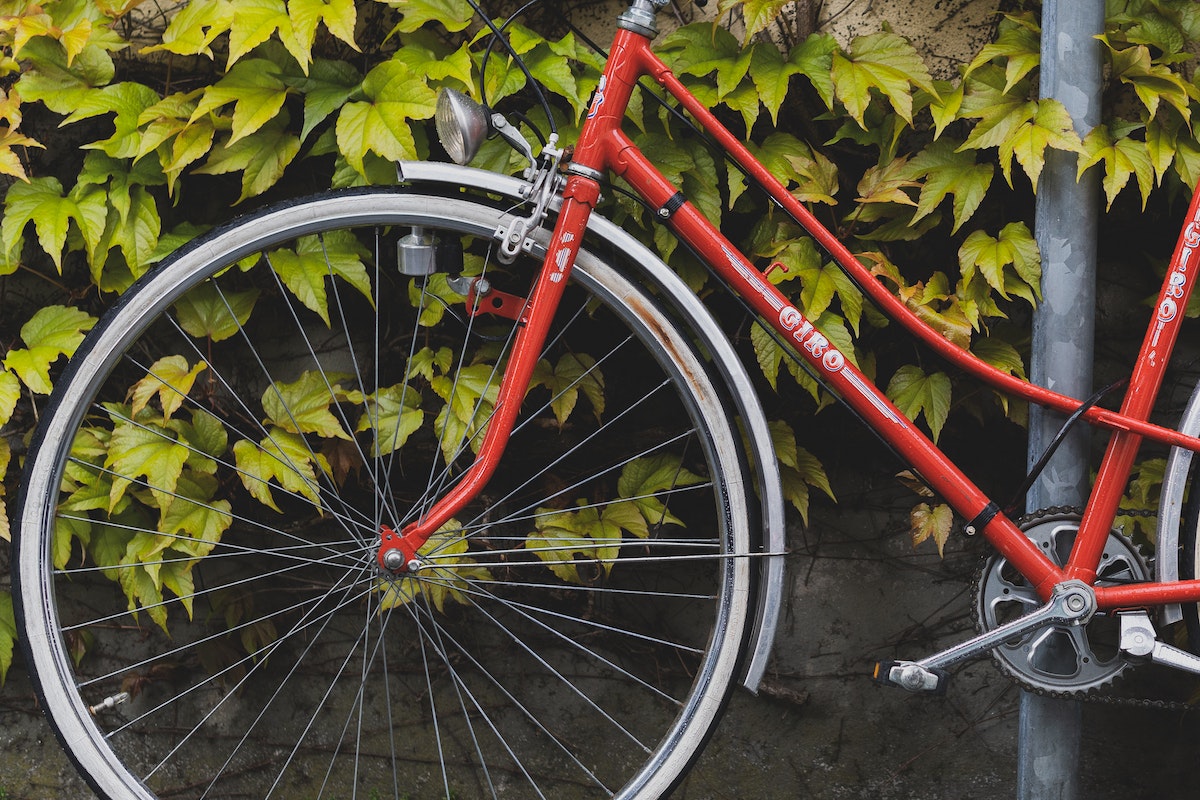Mastering Bike Lubrication: Dry vs Wet Lubes Explained
Introduction
Ensuring the proper lubrication of your bicycle is crucial to its performance and durability. As an avid cyclist, I appreciate the need for high-quality lubrication to keep my ride running effortlessly.
In this discussion, we will delve into the distinctions between dry and wet lubricants, examining their makeup, advantages, and drawbacks. This will guide you in deciding which type of lube best suits your specific cycling requirements.
Exploring the Importance of Suitable Bike Lubrication: A Primer on Dry and Wet Lubricants
The lubrication of your bike’s drivetrain is a pivotal factor in guaranteeing a seamless and efficient ride. It also wards off premature wear and damage to essential components. There are two primary kinds of bike lubricants to bear in mind: dry and wet lubes.
Dry lubricants are tailored specifically for dry environments, such as cycling in dusty or sandy landscapes. They commonly comprise a wax or Teflon-based formula that forms a dry, protective layer on your bike chain.
This dry sheath acts as a shield, diminishing friction and discouraging dirt and debris from adhering to the chain. A notable benefit of dry lubes is their dirt-repelling capability.
When pedaling through dust-filled environments, the last thing you desire is a chain encrusted with grime. Dry lubes perform exceptionally in this regard, keeping your drivetrain pristine and reducing the wear and tear instigated by abrasive particles. Furthermore, the dry character of these lubes frequently results in a quieter ride, as they don’t gather as much debris.
Conversely, wet lubricants are a specific kind of lube devised for bikes, especially for the chain and drivetrain parts. They are engineered to deliver superior protection and lubrication, even in damp or muddy conditions.
Wet lubricants typically possess a greater viscosity than dry lubes, enabling them to cling to surfaces more effectively and resist being rinsed off by water.
They form a thin film that decreases friction between the moving components, forestalling wear and prolonging the components’ lifespan. Additionally, wet lubes offer a degree of corrosion protection, contributing to the preservation of your bike’s performance and longevity.
Note: Bike-clothes.com makes use of affiliate relationships with merchants for monetization. Click here to read more.
Delving Deeper into Dry and Wet Lubricants
Understanding Dry Lube
Dry lubricant represents a unique solution specifically crafted for bicycles, providing an alternative perspective compared to wet lubes. Recently, I experimented with a dry lube on my bicycle and it significantly elevated my cycling experience. Dry lube is initially a liquid lubricant that swiftly dries to form a wax-like coating on the bike’s chain and drivetrain.
One aspect that impresses me about dry lube is its composition. It typically comprises a carrier fluid that rapidly evaporates, leaving behind a thin film of lubricating particles such as Teflon or graphite. This combination significantly reduces friction between the chain links, resulting in a smoother and more efficient ride.
The application of dry lube is a simple task. I shake the bottle to disperse the particles, then apply a thin coating of the lube onto the chain while rotating the pedals in reverse. After a few moments, the carrier fluid evaporates, leaving behind a dry, lubricating layer.
The performance I’ve noticed with dry lube is striking. I immediately observed a quieter, smoother ride after its application. This is particularly useful if you frequently cycle in dusty or dry environments.
Another notable advantage of dry lube is its longevity. Since it doesn’t collect dirt like wet lubes, I found less frequent cleaning and reapplication necessary. This conserved time and effort, allowing me to log more hours on the road.
However, it’s essential to highlight that dry lube is not suitable for wet or rainy conditions, as it tends to be washed off easily. If you often cycle in damp conditions, wet lube may be a more suitable choice.
The Optimal Conditions for Dry Lube Usage
Selecting the appropriate lubricant for your bike can profoundly impact your cycling experience. Having experimented with both dry and wet lubes, I understand the pros and cons of each.
I predominantly use dry lubricant when cycling in dry and dusty conditions. It maintains a cleaner drivetrain over longer rides, minimizing the need for regular cleaning. The cycling efficiency and smoothness it enables are exceptional.
However, dry lubrication isn’t without its limitations. It underperforms in wet or rainy conditions, as it tends to be quickly washed away, leaving the chain exposed to increased friction and potential corrosion.
Pros and Cons of Dry Lube
Pros
- Cleanliness
- Efficiency
- Longevity
- Noise Reduction
Cons
- Limited Wet Performance
- Frequent Reapplication
- Less Protection
Understanding Wet Lube
Wet lube is a form of bike lubricant specially crafted to withstand damp and muddy conditions, making it a favorite amongst cyclists who frequently encounter such terrains. Unlike its dry counterpart that leaves a wax-like coating, wet lube remains fluid on the chain after application, providing a level of stickiness that helps it endure wet conditions better.
Its formulation typically consists of thicker, heavier oils that don’t evaporate easily. This unique composition forms a durable film on the chain, reducing friction between the moving components, and offering lasting protection against corrosion and wear.
Moreover, its inherent stickiness makes it resistant to being washed away, even when exposed to rain or muddy terrain. This enduring presence of lubrication translates into longer periods between applications, making it a low-maintenance option for those cycling in challenging weather or terrains.
However, it’s worth noting that the stickiness of wet lube can attract more dirt and grime, necessitating thorough and regular cleaning to maintain optimal chain performance.
The Ideal Condition for Using Wet Lube
Wet lubes shine in wet or muddy conditions. They are specifically designed to withstand water while offering durable lubrication and protection.
They perform optimally when there’s a high chance of encountering rain, puddles, or muddy terrain, making them particularly useful for off-road riding, damp climates, or during winter seasons when moisture and precipitation are prevalent.
Pros and Cons of Wet Lubes
Pros
- Superior Lubrication
- Water Resistance
- Long-lasting Performance
- Versatility
Cons
- Attracts dirt and grime
- Messy resistance
- Potential chain noise
Dry vs. Wet Lubes: A Comparison
Contrasting Dry and Wet Lubes
The decision between dry and wet lubrication primarily hinges on your cycling conditions and preferences. If you mainly cycle in dry conditions and value cleanliness, efficiency, and low maintenance, dry lube should be your pick.
However, if you frequently traverse wet or muddy terrains, and value top-notch lubrication and protection, wet lube would be your ideal choice. It’s crucial to evaluate your cycling environment and maintenance habits to make an educated decision that ensures maximum bike performance and longevity.
A Guide to Applying Bike Lubricants
When it comes to applying bike lubricants, there are several practical tips that have significantly helped maintain my bike’s performance. Firstly, cleanliness is vital. Before any lubrication, I ensure to thoroughly clean my bike’s drivetrain.
Then, I concentrate on applying the lube to the chain’s inside, rotating the pedals backward slowly while applying a thin, even layer of lubricant for optimal coverage.
After application, I allow it to sit for a few minutes to penetrate the chain, ensuring that the lubricant effectively reaches all moving parts like the rollers and pins. Once this waiting time is up, I use a clean rag to remove any excess lube from the chain’s outer surface.
This final step is crucial in preventing dirt from adhering to the chain, keeping my drivetrain cleaner for a longer duration.
Choosing the Right Lube for Your Bike
The correct lube for your bike hinges on various factors, including the riding conditions, maintenance preferences, and personal choices. If you frequently cycle in dry, dusty conditions, a dry lube would be more suitable, whereas, for wet or muddy conditions, a wet lube would be the preferred choice.
Some cyclists prefer the smoother, quieter operation provided by wet lubes, while others favor the cleaner, more efficient pedaling of dry lubes.

Frequently Asked Questions (FAQs)
How often should I lubricate my bike chain?
The lubrication frequency relies on various factors, including riding conditions, weather, and mileage. Generally, it’s suggested to lubricate your bike chain every 100-200 miles or whenever you observe signs of dryness or increased friction.
Can I use WD-40 as a bike lubricant?
While WD-40 can function as a temporary lubricant or cleaning agent, it isn’t designed for long-lasting lubrication. It tends to attract dirt and can accelerate chain wear. It’s more advisable to use a lubricant specially formulated for bicycles.
Should I apply lubricant to other parts of my bike?
While the chain is the primary focus for lubrication, it’s also helpful to apply a minimal amount of lube to other moving parts like derailleurs, pivots, and cables. This practice aids in maintaining smooth operation and warding off corrosion.
Should I clean my chain before applying a new lubricant?
Absolutely, it’s crucial to thoroughly clean your chain before introducing a new lubricant. This ensures optimal adhesion and penetration of the lubricant, maximizing its efficacy and preventing dirt and grime accumulation.
Conclusion
Choosing and applying the appropriate bike lubricant is critical for preserving the performance and lifespan of your bike’s drivetrain.
Regular cleaning and lubrication are essential in maintaining your bike’s performance and longevity, regardless of the lube type you select. Enjoy your cycling adventures with a well-lubricated.



